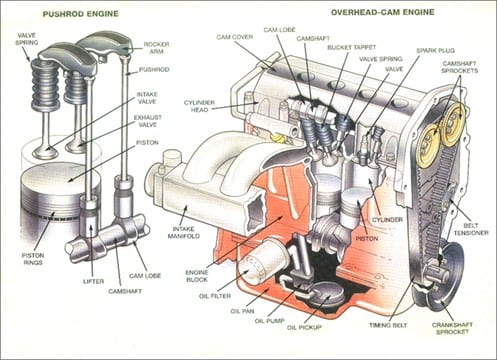Non-roasting process for recovering gold from arsenic-containing ores and concentrates 2
The carbon-containing gold - arsenic concentrate treatment process (see Figure 2 ) stipulates that carbon shale is pre-separated by flotation, bacterial leaching is carried out on flotation tailings, and cyanidation is carried out on bacterial leaching slag. After 70 hours of bacterial leaching , the arsenic content in the concentrate decreased from 6.6% to 1.0-1.2% , and the arsenic sulfide oxidation rate was 93-95% . When the bacterial leaching residue is adsorbed and cyanated, the gold recovery rate is 92% (for operation); however, when the raw concentrate is cyanated directly without prior leaching of the bacteria, the gold recovery rate is only 5 to 10% . Gold in carbonaceous concentrate obtained by flotation Laboratory studies have been confirmed by bacterial leaching expansion process tests. Expanded process testing includes trough continuous bacterial leaching, regeneration of bacterial solutions and their return to use. The expanded test results show that the implementation - stage bacterial leaching is more reasonable; in the case of containing carbonaceous materials in the concentrate, it is not necessary to pre-separate the carbonaceous material from the concentrate, and it is possible to directly carry out bacterial leaching on the concentrate. of. The preliminary technical - economic calculation proves that before the cyanidation of the sulfide ore, the bacterial leaching method is used to dissociate the fine-grained gold, which not only has good dissociation effect, but also is economically reasonable. In the treatment of arsenic-containing concentrates, the bacterial leaching method can avoid the pollution of the atmosphere by toxic gases containing sulfur and arsenic. The application of the established bacterial leaching process in industrial production not only enables the development and utilization of many new gold deposits, but also enables companies dealing with gold - arsenic ores and other products to significantly increase the recovery rate of gold. Engine Block – This is the very core of the engine. Often made of aluminum or iron, it has several holes to contain the cylinders as well as provide water and oil flow paths to cool and lubricate the engine. Oil paths are narrower than the water flow paths. The engine block also houses the pistons, crankshaft, camshaft, and between four and twelve cylinders-depending on the vehicle, in a line, also known as inline, flat, or in the shape of a V.
Timing Belt/Chain – The camshaft and crankshafts are synchronized to ensure the precise timing in order for the engine to run properly. The belt is made of heavy-duty rubber with cogs to grasp the pulleys from the camshaft and crankshaft. The chain, similar to your bicycle chain wraps around pulleys with teeth.
With so many mechanisms performing many tasks at lightning speed, over time, parts may begin to wear causing your car to behave differently. Here are the most common engine problems and their associated symptoms: Cylinder Liner,Cylinder Head,Gasket Piston,Piston Ring Shandong Lixu International Trading Co., Ltd. , https://www.sdhxmachinery.com
Pistons – Are a cylindrical apparatus with a flat surface on top. The role of the piston is to transfer energy created from combustion to the crankshaft to propel the vehicle. Pistons travel up and down within the cylinder twice during each rotation of the crankshaft. Pistons on engines that rotate at 1250 RPM, will travel up and down 2500 times per minute. Inside the piston, lie piston rings that are made to help create compression and reduce the friction from the constant rubbing of the cylinder.
Crankshaft – The crankshaft is located in the lower section of the engine block, within the crankshaft journals (an area of the shaft that rests on the bearings). This keenly machined and balanced mechanism is connected to the pistons through the connecting rod. Similar to how a jack-in-the-box operates, the crankshaft turns the pistons up and down motion into a reciprocal motion, at engine speed.
Camshaft – Varying from vehicle to vehicle, the camshaft may either be located within the engine block or in the cylinder heads. Many modern vehicles have them in the cylinder heads, also known as Dual Overhead Camshaft (DOHC) or Single Overhead Camshaft (SOHC), and supported by a sequence of bearings that are lubricated in oil for longevity. The role of the camshaft is to regulate the timing of the opening and closing of valves and take the rotary motion from the crankshaft and transfer it to an up and down motion to control the movement of the lifters, moving the pushrods, rockers, and valves.
Cylinder Head – Attached to the engine through cylinder bolts, sealed with the head gasket. The cylinder head contains many items including the valve springs, valves, lifters, pushrods, rockers, and camshafts to control passageways that allow the flow of intake air into the cylinders during the intake stroke as well as exhaust passages that remove exhaust gases during the exhaust stroke.
Poor compression – Results in loss of power, misfiring, or no-start.
Cracked engine block – Causes overheating, smoke coming from exhaust, or coolant leaks, usually identified on the side of the engine.
Damaged Pistons, Rings, and/or Cylinders – Exhibit rattling sounds, blue smoke coming from the exhaust, rough idle, or a failed emissions test.
Broken or worn Rods, Bearings, & Pins – Cause tapping or ticking sounds, low oil pressure, metal shavings found in engine oil, or rattling upon acceleration.
Car engines may seem complicated, but their task is simple: to propel your vehicle forward. With so many components working together to create this motion, it`s imperative your vehicle receives proper maintenance to ensure their longevity. Regularly scheduled oil changes, fluid flushes, and changing belts and hoses at the recommended time is a great way to help prevent the unfortunate circumstance of a failed engine.
